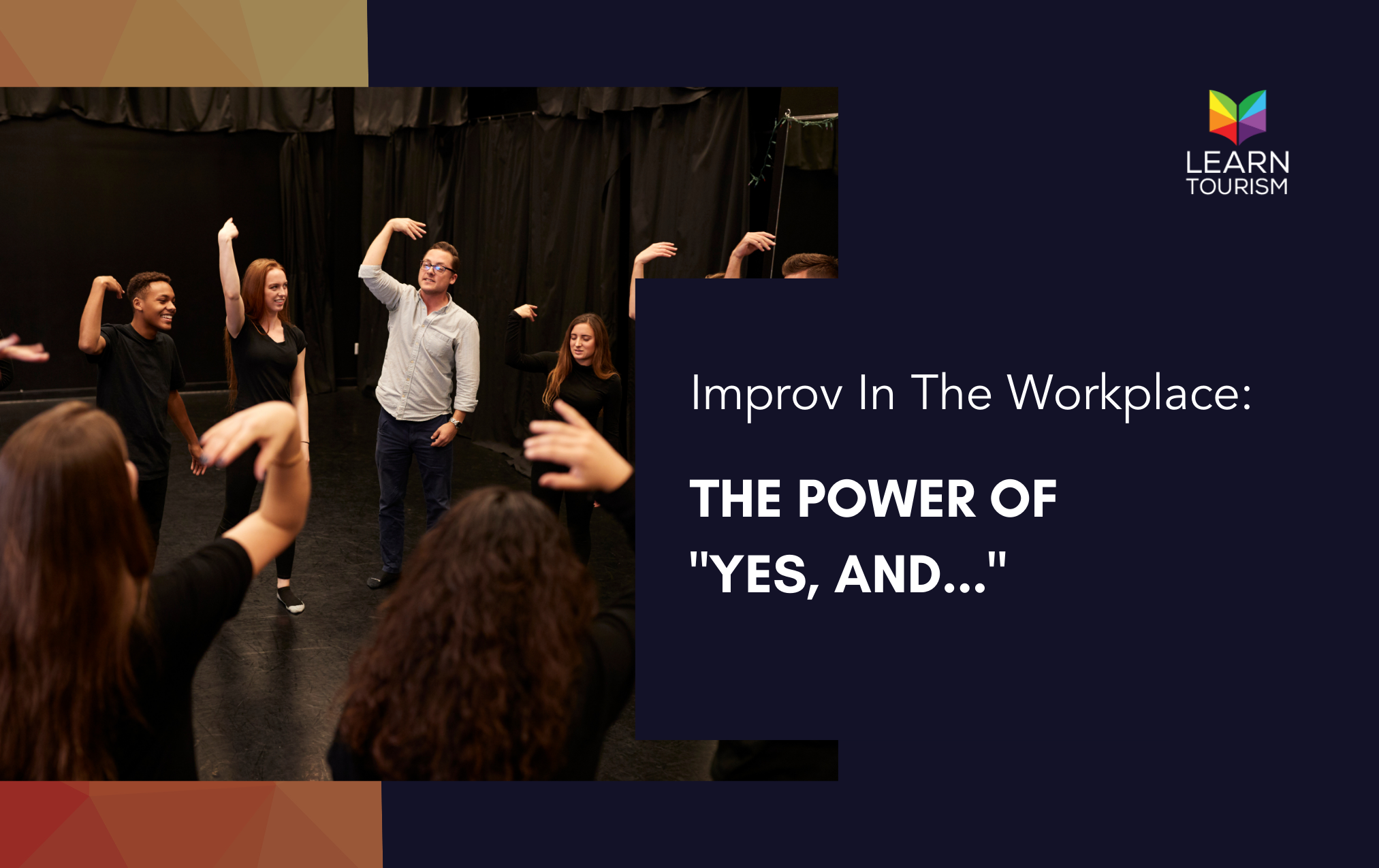
Improv In The Workplace: The Power of "Yes, And..."
Improv In The Workplace: The Power of "Yes, And..."
Improvisation, or "improv," isn’t just for comedy clubs. It’s a powerful training tool that can help organizations improve communication, collaboration, and adaptability. One of the fundamental principles of improv—"Yes, And..."—can revolutionize the way teams engage in learning and problem-solving.
What is "Yes, And..."?
The "Yes, And..." technique encourages participants to accept what their colleagues say and build upon it. This fosters an open-minded and supportive environment, which is crucial in team settings, customer interactions, and brainstorming sessions.
- "Yes" – Acknowledging and accepting the idea presented.
- "And" – Adding to the idea, rather than shutting it down.
For example, if a teammate says, "Our destination could market itself as an outdoor adventure hub," instead of replying with "But we don't have enough trails," a "Yes, And..." response could be "Yes! And we could highlight our river sports and nearby state parks to create a more complete adventure experience!"
Why Use Improv in Training?
- Enhances Communication Skills – Improv encourages active listening and clear articulation, essential for effective teamwork and customer service.
- Encourages Adaptability – Quick thinking and flexibility are key in fast-paced industries like tourism, hospitality, and customer service.
- Boosts Creativity – Teams become more open to innovative ideas when there are no immediate rejections.
- Builds Confidence – Practicing spontaneous responses in a low-stakes environment helps employees feel more comfortable handling unexpected situations.
- Strengthens Teamwork – Improv exercises foster trust and collaboration, helping teams work better together.
Improv-Based Training Exercises
Here are some improv exercises that organizations can use in training:
1. "Yes, And..." Brainstorming
- How to Play: Teams take turns presenting an idea. Each subsequent person must respond with “Yes, and...” before expanding on the idea.
- Why It Works: This prevents early-stage criticism and keeps discussions productive and positive.
2. Role-Playing Customer Scenarios
- How to Play: One person plays a customer with a challenge (e.g., a lost tourist), and another must help them using a "Yes, And..." approach.
- Why It Works: Enhances customer service skills and teaches staff how to adapt to different personalities.
3. The "One-Word Story"
- How to Play: Participants take turns adding one word at a time to build a collective story.
- Why It Works: Encourages collaboration and quick thinking.
4. The "Change Game"
- How to Play: One person tells a story while another randomly shouts “Change!” forcing them to pivot their approach.
- Why It Works: Develops adaptability and problem-solving skills.
Applying Improv to Tourism & Hospitality Training
For organizations in the tourism and hospitality industry, improv can help:
- Frontline workers respond to unexpected guest requests with ease.
- Marketing teams generate creative campaign ideas without fear of rejection.
- Destination ambassadors engage with visitors in a more natural, personalized way.
Final Thoughts
Incorporating improvisation into training not only makes learning more engaging but also fosters a culture of collaboration and innovation. By embracing "Yes, And...," organizations can build teams that are more adaptable, creative, and customer-focused.
About Learn Tourism the nonprofit academy...
Learn Tourism is a 501c3 nonprofit organization dedicated to advancing the tourism industry through innovative educational practices and professional development initiatives. Our mission is to harness the power of science, business psychology, and adult education to build sustainable economies and enrich the tourism landscape.